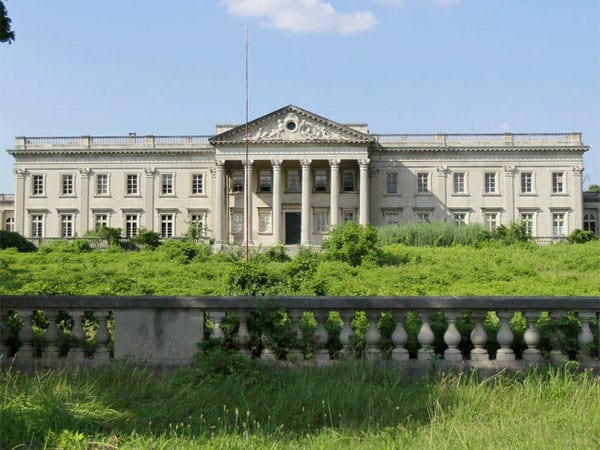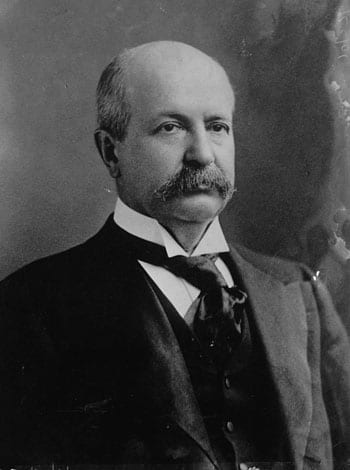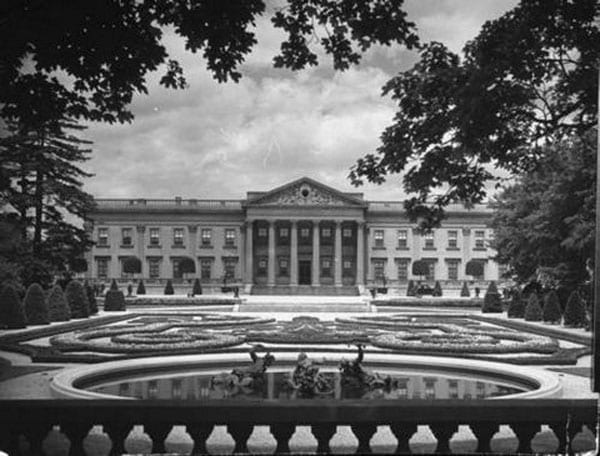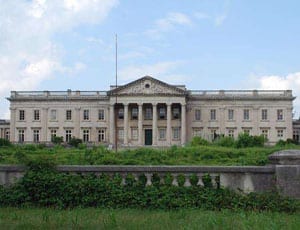An opportunity to buy an American equivalent of Downton Abbey
Downton Abbey returns to our screens this autumn and one has to ask whether its writer Julian Fellowes was at all influenced by the story of the story of Peter Widener of Philadelphia, Pennsylvania whose son and grandson both died in the sinking of the RMS Titanic.



As happened to Widener, a merchant and successful businessman, the first series of Downton Abbey began with the news that Lord Grantham’s heir presumptive and his son both died aboard the ill fated vessel. Three years later, Widener is said to have died of “deep sorrow” caused by the loss.
Widener comes to attention again now because one of the neoclassical revival mansions he built – Lynnewood Hall – has come to the market for £11.9 million ($20 million) despite requiring at a renovation budget of at least a further £29.8 million ($50 million). Featuring 110 rooms and an astounding 70,000 square foot of living space (including 55 bedrooms) on 33.85 gated acres, Lynnewood Hall is being sold by a New York urologist and pastor of a Korean church named Richard S. Yoon.
Constructed circa 1900 at a cost of $8 million (or £126.3 million or $212 million in today’s money) to house three generations of Wideners and one of America’s largest private art collections, the décor of the mansion was described as being “leaving no doubt as to the family’s wealth”. One writer commented that it was:
“Dripping with silk, velvet and gilded mouldings, the rooms furnished with chairs from Louis XV’s palace, Persian rugs and Chinese pottery, the halls crammed with art by Raphael, Rembrandt, El Greco, Van Dyck and Donatello”.
After Peter Widener’s death, his only surviving son, Joseph, took over the family empire and “perfected his father’s vast art collection”. In 1932, Fortune magazine described it as “the finest private collection of past art to be found in the U.S.”
Joseph Widener’s son, however, did not like Lynnewood one bit. In his 1940 memoir, he wrote: “It’s a museum, not a home. It’s as cold and as formal as if real people didn’t live here”. He converted the stables to create a more comfortable residence for himself and after his mother’s death added: “She had died alone in that great lonely house”. In time, Joseph Widener donated the family’s art collection – then valued at an astounding $20 million (£172 million or $290 million in today’s money) – to the National Museum in Washington.
With the art collection gone, the great era for Lynnewood was over and the Widener family auctioned off the estate in 1944. The buyers wanted but failed to build a Protestant university and decades of bankruptcy proceedings and repossessions followed. In 1952, for example, the mansion was then sold for just $192,000 (the equivalent of £1.02 million or $1.7 million in today’s money). During this time, the neglected mansion fell into significant decline but maybe now it has been brought to the market by Frank Johnson of BHHS Fox & Roach Realtors, it could just be time for a new ‘Gilded Age’ at Lynnewood Hall.
Internal photographs were taken by @AustinXCO4 on Instagram.
Subscribe to our free once daily email newsletter here:
